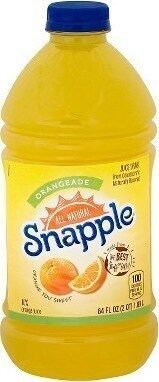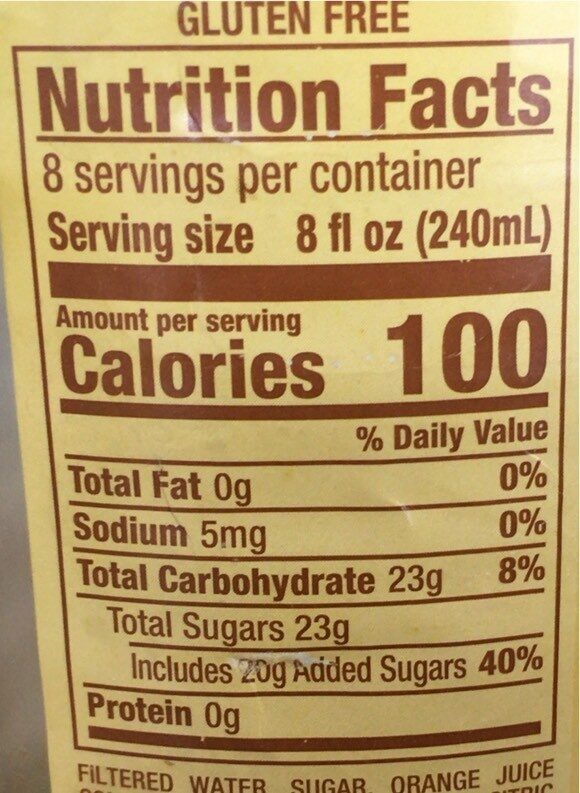Orangeade juice drink from concentrate - Snapple - 64 fl oz, 1.89 l
This product page is not complete. You can help to complete it by editing it and adding more data from the photos we have, or by taking more photos using the app for Android or iPhone/iPad. Thank you!
×
Barcode: 0076183001622 (EAN / EAN-13) 076183001622 (UPC / UPC-A)
Quantity: 64 fl oz, 1.89 l
Packaging: Plastic bottle
Brands: Snapple
Brand owner: Snapple Beverage Corp.
Categories: Plant-based foods and beverages, Beverages, Plant-based beverages, Non-alcoholic beverages, Sweetened beverages
Labels, certifications, awards:
No gluten, Kosher, Organized Kashrut Kosher
Countries where sold: United States
Matching with your preferences
Environment
Packaging
Transportation
Report a problem
Data sources
Product added on by hhm0
Last edit of product page on by kiliweb.
Product page also edited by openfoodfacts-contributors, org-database-usda, packbot, yuka.sY2b0xO6T85zoF3NwEKvlmV8ceLQrCnPLTbntWO1y8vXDsLJRs9--aHDFqs, yuka.sY2b0xO6T85zoF3NwEKvlnQebOvz8jviGRrhyGDUxdO3EKTKQNVC-6_hGKs.










